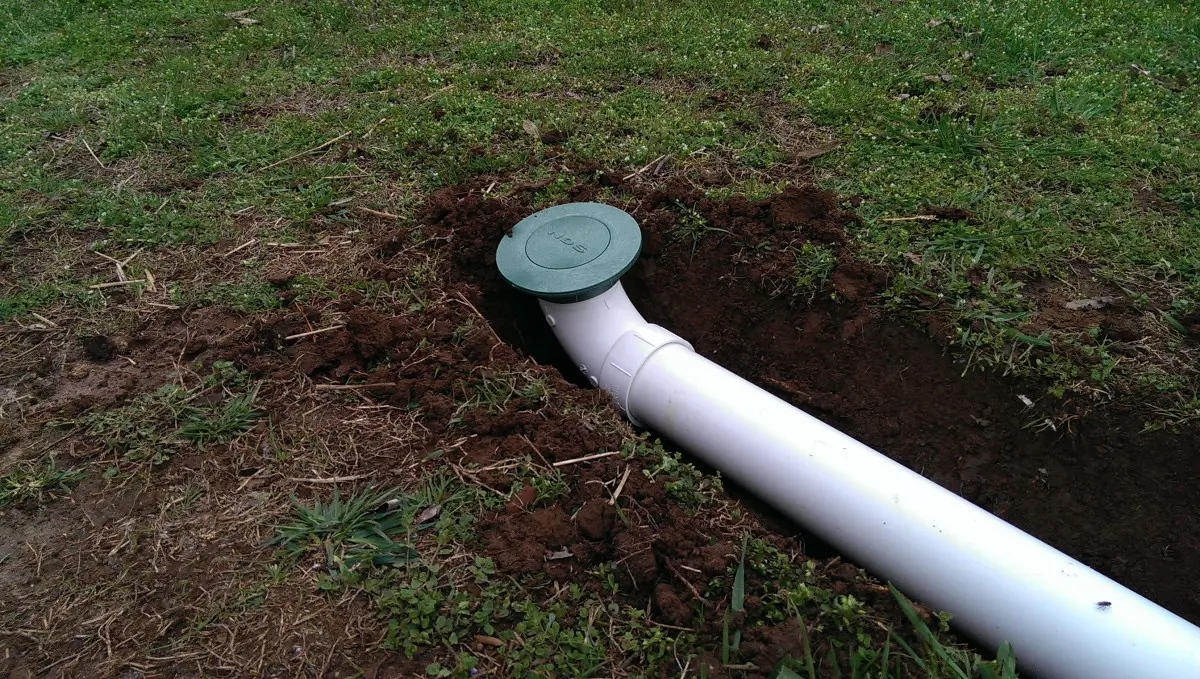Without a rainwater drain system or proper sloping your yard can become a muddy mess attracting mosquitoes and other insects and if left untreated your landscape and garden could be ruined and the water could eventually find a way into your home. What are the types of Drains used to prevent water pooling?
General Drain types:
- Surface-removal of excess H2O from the surface
- Subsurface-removal of H2O from below the soil surface
- Channel Drains:
Used on impervious surfaces. - French Drains:
Use Gravel & Trench - Dry Wells:
Used to hold H2O until it naturally percolates into the ground - Yard Drains:
Used to redirect H2O
Having good yard drainage and sloping is necessary as it will keep too much puddling of rainwater water away from your home’s foundation, which can cause damage over time, and keep the yard itself from being too soggy muddy, and wet keeping you from enjoying it.
Types of Drains
There are two general types of drainage systems surface and subsurface. Surface drainage is the removal of excess rainwater from the soil surface. Subsurface drainage is the removal of water from the soil profile.
- Surface drainage is the removal of excess water from the soil’s surface
- Subsurface drainage is the removal of water from the soil profile.
For the purpose of preventing surface water ponding and controlling the runoff without causing erosion, surface drainage is the cheapest and easiest option in more common situations. In this system, excess H2O from the soil surface is eliminated by flowing over the naturally or artificially sloping ground toward surface inlets, shallow ditches, and grassed waterways always away from the house.
Surface drainage may not be sufficient enough or practical in poorly drained soils where the water table is always near the ground surface. In these cases, perforated plastic pipes are needed, buried in the ground to remove the excess water and lower the water table.
This is referred to as Subsurface drainage. In this system, perforated drainpipes can be installed in a random or parallel layout with the latter being the more common of the two in recent years. The herringbone layout is a subset of the parallel layout.
The most common reasons that a yard may fail to naturally remove excess rainwater appropriately include a downspout that is too short, a yard slope that is too flat, impacted soil, front walkways blocking water, or runoff erosion. Good drainage is key to keeping plants healthy, including potted plants. Without it, roots may suffocate, burn from salt buildup or rot from water that doesn’t flow through the soil.
Channel Drains:

Channel drains are used to prevent water from pooling on impervious surfaces like driveways or walkways.
Channel drains prevent:
- Puddles forming around inground pools, caused by overflowing water and splashes
- Water flowing into your garage and home
- Water collections on walkways, like sidewalks and pavers
The channel drain is installed in the pavement and helps collect the water before it pools. After collecting the water, an effective channel drain redirects the water flow into an appropriate drainage system. Often channel drains are just one component that connects to other parts of a complete drainage system. Consequently, this directs excess water away from your home.
French Drains:
French drains are a common solution to yard drainage problems. Not all French drain systems are the same. Here are some specific details we pay attention to when installing french drains, or trench drains.
Dry Wells:
One possibility is that your French drain disperses water into a dry well. Think of it this way: Dry wells look like garbage cans buried in the ground. Their purpose is to collect excess water until it can naturally percolate into the ground. Most dry wells (depending) hold about 50 gallons of H2O.
The well contains small holes to allow the water inside to escape very slowly over a period of time. Much like the French drain installation described above, the dry well is surrounded by washed gravel and geotextile fabric.
10 Steps for Waterproofing an Existing Outside Wall
What are the 10 steps for a successful solution waterproofing an existing outside Basement wall or a wall built below grade that leaks ..…..……………………………………..… Read more
Yard Drains:
Yard drains are also called catch basins. As that name implies, the purpose of this drain is to ‘catch’ excess surface water in a basin and redirect it. The catch basin acts like a sewer drain and directs the water through a pipe sloping away from the basin. A yard drain can solve a simple drainage problem, or be a part of a larger overall drainage system. How much water can a properly installed yard drain handle
When do you use a vapor barrier with insulation?
If you live in a humid and hot climate, you might want to install a vapor barrier along with insulation in your walls creating an air barrier, you’ll have less humidity buildup, if you live in a cold climate, using both will work together to create thermal barriers and prevent air leaks ..……………………………………………………. Read more
How Deep Should a French Drain Be?
About 8-24″ deep should be sufficient for many H2O diverting projects
About 18-24 ” minimum depth for foundations-this depth helps capture most of the H2O that’s an issue to protect your foundation or keep H2O out of the basement.
For a slab foundation, French Drain is about 18-24 ” below the slab. ……………………………………………………………………………. Read more

References: Spruce-What Is a French Drain?
